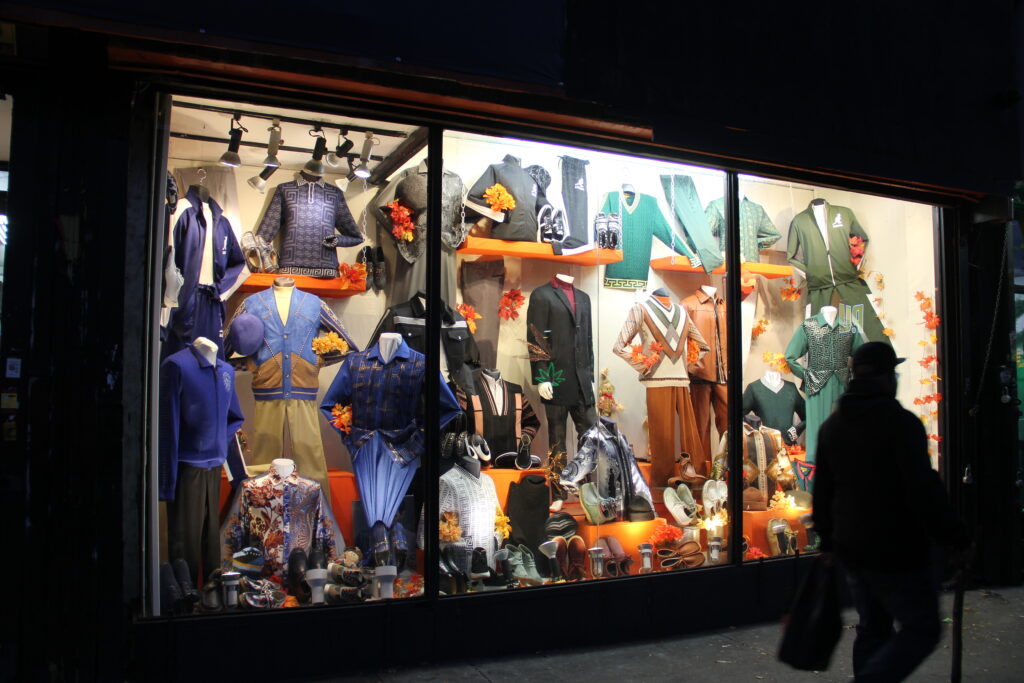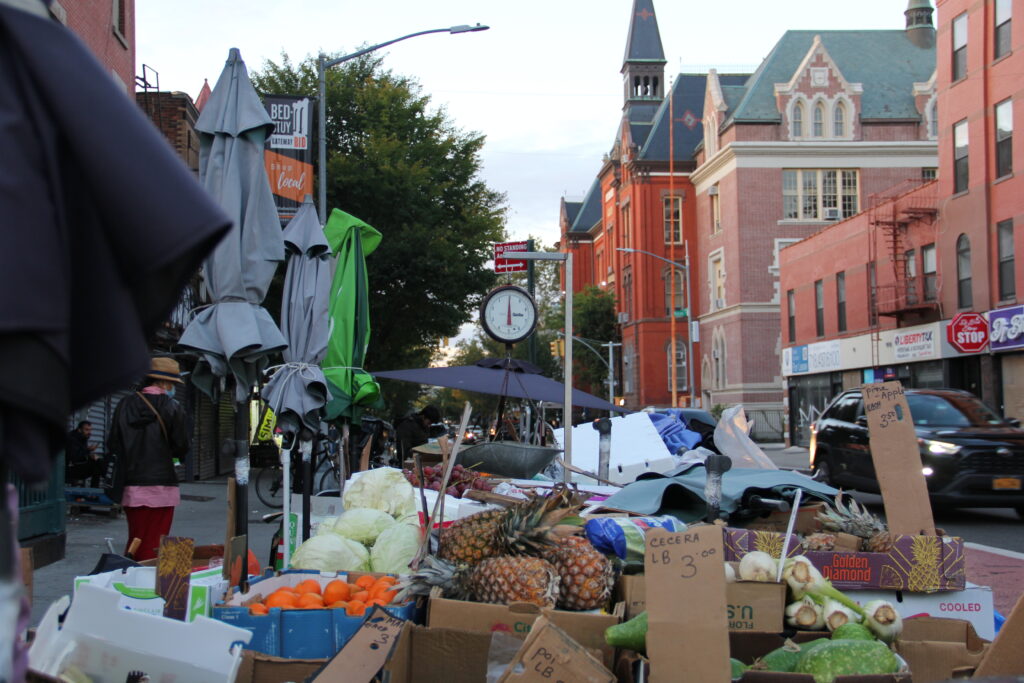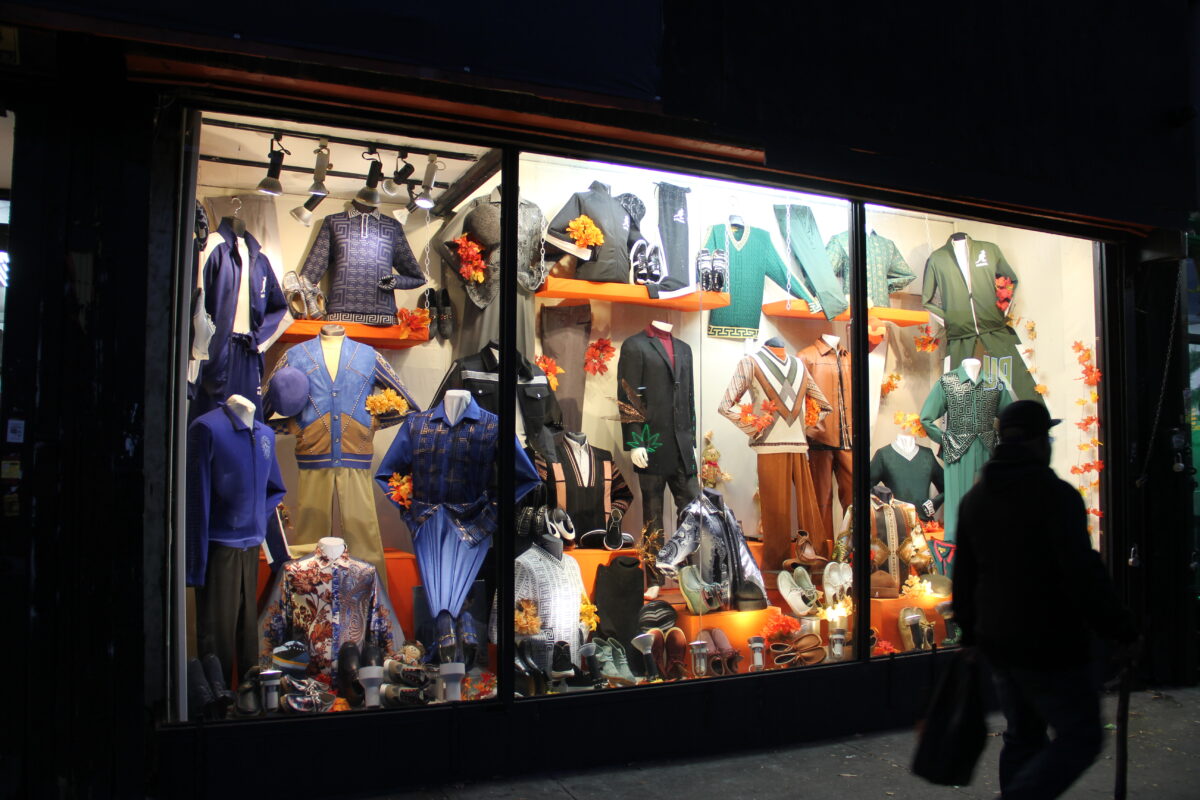‘Believe the Hype’ Column: Nostrand Avenue on Foot
By Christine Stoddard | cstoddard@queensledger.com
The following was originally published in our Jan. 4, 2024 print edition:
The Brooklyn Star this week, introduces our readers to Christine Stoddard, our new community editor. Christine will pen a weekly column on Brooklyn from the ground floor, called “Believe the Hype” While covering events and meetings is part of her everyday life, Christine will bring a whole new meaning to living in Brooklyn through the eyes of a journalist. Welcome Christine!
“I’m gonna need a couple of dollars if that’s the case,” says a cock-eyed man in a wheelchair, parked on the block of Nostrand Avenue just south of Atlantic. While he went through his ritual of asking for money in the street, I had the nerve to approach him with the excuse of a class reporting assignment. No mention of Columbia University because I knew better. We are in Bedford-Stuyvesant, the neighborhood I have called home for the past year, though I have lived in the general vicinity for the past seven. My brief conversation mate is someone I have noticed before, usually sitting a block or two closer to the Nostrand Avenue subway stop on the A/C line. His response implied what I’m reminded of day after day: By living here, I have already trespassed. Stop asking for more. Or at least give something in return. Embarrassed, I returned to the Monday rush hour crowd, wondering who had patience for me. After all, wasn’t I asking for free emotional labor?

The window of Stacy Adams, a men’s clothing store, on Nostrand Avenue. Photo by Christine Stoddard.
My ex, a white, college-educated Virginian in his late 20s at the time, used to complain that Central and East Brooklyn strangers “always” assumed he had money. Back then, we lived at the edge of Crown Heights in working-class Ocean Hill, just south of Bed-Stuy. My ex had all the visual markers of a suburban middle-class upbringing: L.L. Bean polos, R.E.I. khakis, New Balance sneakers. And he had the mannerisms, too: relatively quiet speech, strained “polite” smiles, the total lack of desire to dance to music blaring from sidewalk boomboxes. All that was missing from his Gentrifier-in-a-Bag Halloween costume was a Starbucks cup. (He didn’t drink coffee.)
I, on the other hand, am more ambiguous because, though born and raised in the transient Arlington, VA, my parents are not from there. Both lived through poverty and El Salvador’s civil war, during which they met. My father, a native New Yorker, taught me, “School’s the place for the Queen’s English. On the street, you talk fast and slangy.” My mother, a Salvadoran immigrant, raised me to “never show you have money even when you do.” Still, I am not Black. My closest proximity to blackness is occasionally being confused for mixed race: half-Black, half-white. In Ocean Hill, a man who noticed me taking pictures with my DSLR on a lone winter‘s night in early 2020, stopped me to hit on me. Then he asked if I was “Spanish or Jewish,” as if those were my only ethnic possibilities in that neighborhood.
Ocean Hill, What’s In A Name?
A former city historian colleague of mine once explained that Ocean Hill is a historical name resurfacing in real estate marketing aimed at people like my ex and me: young, non-Black, middle-class, and from elsewhere. For decades leading up to 1960s, Ocean Hill was primarily Italian. During our 2016-2020 tenure there, it was largely West Indian and African-American. Many of our Millennial peers who were raised in Brooklyn called the area Bed-Stuy, Crown Heights, or even Brownsville. Few had heard of this historical name so long out of use. They warned us that “Ocean Hill” was a gimmick—like how some real estate listings brand the Broadway corridor of Bed-Stuy and Bushwick as “Bedwick” or call eastern Bushwick “East Williamsburg.” Luckily, we were not paying “East Williamsburg” or “Bedwick” rent.
Back on this more recent Monday evening, most of the people who speak to me first are men who seem to choose to sexualize me. As I take out my DSLR to document one of the two pizzerias by the subway stop, a smooth man calls to me: “Hey miss, are you taking pictures today?” It’s not an innocent question. I ignore him, knowing that the follow-up will be, “Take my picture, darling.” This is a familiar script that sometimes turns hostile as I reject all advances. Casanova continues to say “hey” a couple more times from the van he’s leaning against, but I walk away. Once, during my first six months in Ocean Hill, a scorned catcaller spat on the ground and yelled “Welcome to Brooklyn, sweetheart!”
The Artist in Me
I consider putting up with the catcalling and begging as my price for living in Bed-Stuy. After all, most other aspects of living here make me happy. This is not my birthplace or childhood stomping ground, but it is my home. I benefit from a comfortable apartment and proximity to many lovely local businesses on Tompkins, Throop, Marcus Garvey, and Malcolm X. I shoot hoops at Potomac Playground (which reminds me of the Potomac River dividing Arlington from D.C.) and meet friends at Herbert Von King Park. My bodega guy has all my bad habits memorized. I know which dollar stores to hit up for which bargains. Since I first moved here, the neighborhood organization STooPS has supported my creative work, even securing a Brooklyn Public Library residency for me. The STooPS art crawl brings neighborhood old-timers and newcomers together for arts programming presented on stoops or, more recently, in block parties. I have met generations of neighbors through these events.
The Bodega Experience
Maybe I deserve some of the tension. One early morning a few months ago, a 40-something man shimmied up to me while I waited for my bodega sandwich. When I wouldn’t chat, he complained “people come into this neighborhood and don’t want to talk.” Had I wanted to start a fight, I would’ve told him no woman owes him her time. Instead, I told him to have a good day on my way out. My disregard for him had nothing to do with a gentrifier’s scorn and everything to do with zero interest in flirting. The fact remains that he perceived me as an outsider. Transplants flock to Williamsburg and Park Slope, where hallmarks of chi-chi suburban living abound: Whole Foods, The Apple Store, Urban Outfitters. I didn’t move to New York City to replicate my life in Arlington, just with more job opportunities and hipster cred. There’s also the fact that I cannot afford the aforementioned zip codes. But if I deigned to stomach another industry, maybe I could. I have the “right” education, the “right” passport, the “right” complexion. These checked boxes could afford me upward mobility if I wanted—mobility denied to many of my neighbors.
Had I followed the path of many of my high school classmates, I could be making six figures at a government consulting firm now. Instead, I rejected that career option. Having the ability to say no comes with privilege. I never begrudged the transplants who moved to my native Arlington to work at the Pentagon or other federal government entities. I wasn’t sad when Shirlington, a neighborhood previously known for auto body shops and dark, empty lots, was converted into a lively avenue for shopping and dining. Perhaps I would have felt differently if I had generations’ worth of roots there or wanted to raise a family there. Now, the cost of living in Greater Washington, D.C. is almost as high as that of New York City. This economic upsurge only shifted during my lifetime, when Millennials flocked to the region to serve the Obama Administration.

A fruit vendor’s wares on the sidewalk by the A/C Nostrand Ave. stop. Photo by Christine Stoddard.
I don’t have to look hard to notice other transplants coming to Bed-Stuy. More white people. More polos. More Starbucks cups. The row of brownstones across from my apartment building is occupied largely by couples with small children. Still, this remains the neighborhood where just that during that same evening jaunt, I saw an unstable woman trash-picking on Herkimer off the Nostrand strip. She was already wearing one filthy boot, presumably gleaned from the pile before her, when she found another, mismatched but similarly calf-length. She slipped it on and sashayed in the street, many plastic bags hanging from her shoulders, shrieking as the bags shook. Each bag seemed to contain even more plastic bags. In the past, I had only ever heard this woman rasp “Money, please” outside the subway. I don’t ask to take her photo—it could turn transactional—and a candid feels voyeuristic. I remember the beggar in the wheelchair. Another time.
I am still learning my place.
Christine Stoddard is a published author, journalist, artist, and filmmaker named one of Brooklyn Magazine’s Top 50 Most Fascinating People. Send your comments and tips to brooklyndtstarnews@gmail.com.


